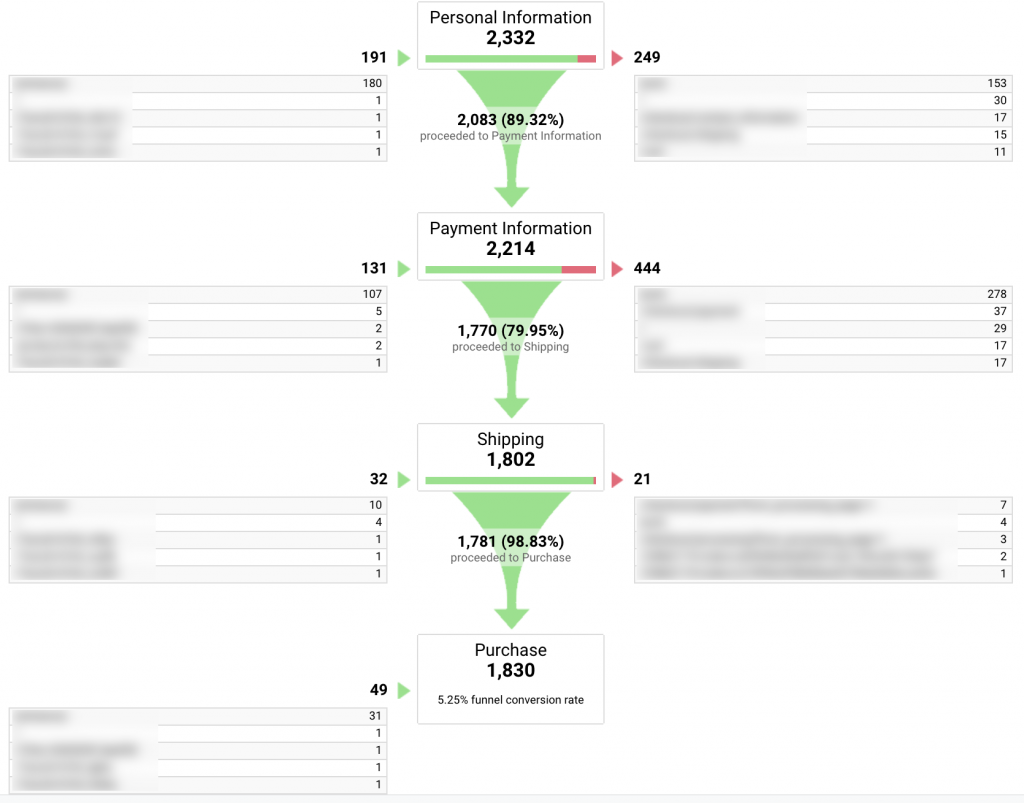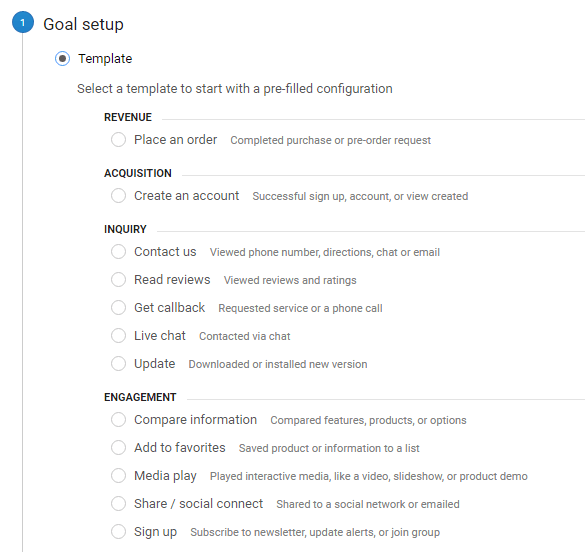Discover the Limitations of Google Analytics Goals: Unveiling the Information Types That Remain Untrackable
As services increasingly depend on data-driven decision-making, recognizing the limitations of tools like Google Analytics ends up being extremely important. While Google Analytics Goals deal valuable understandings into customer interactions, there exist data types that elude monitoring, posturing difficulties to an extensive understanding of user habits. These untrackable information kinds question about the accuracy and completeness of the analytics data that organizations greatly trust for their digital techniques. Curious to discover the surprise unseen areas in your information evaluation procedure?
Incomplete User Journey Tracking
Incomplete individual trip monitoring within Google Analytics can impede the capacity to properly assess user behavior. When the user journey is not completely tracked, there are voids in the information that stop a thorough understanding of just how users connect with a site. This lack of insight can lead to missed out on possibilities for optimization and enhancements to the user experience.
One usual issue with insufficient user journey monitoring is the inability to see the complete course that individuals take previously finishing a goal or leaving the site. Without this details, it is testing to recognize where customers might be encountering barriers or rubbing factors that avoid them from transforming. Additionally, insufficient tracking can cover the impact of certain marketing efforts or internet site changes on user actions.
To resolve this restriction, it is critical to establish appropriate tracking devices within Google Analytics to catch the entire user trip. This might entail setting up occasion monitoring, objective funnels, or making use of devices like Google Tag Supervisor to ensure that no essential interactions go unrecorded. By gaining a detailed sight of the user journey, internet site owners can make more informed decisions to boost individual engagement and drive conversions.
Attribution Challenges
Navigating via attribution obstacles in Google Analytics needs a complete understanding of how various touchpoints add to the general conversion procedure. Attribution difficulties arise from the complexity of contemporary consumer trips, where users engage with multiple channels prior to transforming. Google Analytics provides different acknowledgment versions like first touch, last touch, and direct, each supplying a different point of view on just how credit is designated to touchpoints along the conversion course. These versions may not always accurately show the real influence of each touchpoint on the conversion.
One usual acknowledgment obstacle is the problem in associating conversions to the right source, particularly in cases where users communicate with several networks prior to transforming. In addition, cross-device monitoring positions an additional acknowledgment difficulty, as customers usually change between devices throughout their trip, making it challenging to track their interactions seamlessly.
Offline Conversions
Given the difficulties linked with attributing conversions accurately in online networks, the dimension of offline conversions presents a considerable opportunity for online marketers looking for an extra thorough understanding of their customers' journey. Offline conversions describe actions that consumers absorb the real world, such as making acquisitions in brick-and-mortar stores or over the phone, going to occasions, or engaging with printed materials - what data is google analytics goals unable to track. These conversions are vital for services that operate both online and offline, as they offer valuable insights into the efficiency of advertising and marketing campaigns across numerous touchpoints
Tracking offline conversions typically postured a considerable challenge for online marketers, as it was challenging to connect these actions back to details online communications accurately. Nevertheless, with improvements in technology, such as the assimilation of CRM systems, distinct identifiers, and voucher codes, companies can currently link the void in between online and offline data to obtain an extra all natural view of customer habits. By efficiently measuring offline conversions, marketing experts can optimize their methods, assign sources a check lot more effectively, and ultimately improve the total customer experience.
Cross-Device Tracking
Cross-device monitoring plays an important duty in understanding the interconnected nature of consumers' digital communications throughout several tools. In today's omnichannel world, where individuals perfectly change in between smart devices, desktop computers, and tablet computers, tracking their behavior across these tools is vital for marketers to acquire a detailed view of their client trip.

Additionally, privacy concerns and policies such as GDPR and CCPA have even more difficult cross-device tracking. With customers demanding even more control over their information and boosted constraints on monitoring modern technologies, marketers should find ingenious and privacy-compliant ways to attach customer interactions across tools.
Dynamic Web Content Involvement
Comprehending customer engagement with dynamic web content is essential in enhancing digital marketing approaches for improved audience interaction. Dynamic content describes internet site components that transform based upon user behavior, choices, or various other variables, providing an individualized experience. Tracking individual interactions with dynamic material postures obstacles for traditional analytics devices like Google Analytics.
While Google Analytics can track standard interactions like clicks and web page sights, it might struggle to record more nuanced interactions within vibrant web content. what data is google analytics goals unable to track. Metrics such as time spent on certain dynamic components, float actions, or interactions within pop-ups are usually not quickly measurable making use of standard tracking methods. This limitation impedes online marketers' ability to totally grasp just how customers are involving with dynamic material and tailor their methods appropriately

Verdict
Finally, Google Analytics goals have restrictions in tracking insufficient customer journeys, associating conversions properly, capturing offline conversions, tracking cross-device interactions, you can try these out and measuring dynamic content engagement. These constraints highlight the significance of checking out additional tracking techniques and devices to get a more detailed understanding of individual behavior and conversions beyond what Google Analytics can offer.
While Google Analytics Goals offer important insights into customer interactions, there exist data types that elude monitoring, posing obstacles to a comprehensive understanding of individual behavior.Insufficient individual journey tracking within Google Analytics can impede the ability to properly examine user actions. When the customer trip is not completely tracked, there are gaps in the information that stop a comprehensive understanding of exactly how users communicate with an internet site.One usual issue with insufficient customer trip tracking is the inability to see the full course that customers take in the past finishing an objective or leaving the site. By getting a comprehensive sight of the customer trip, web site owners home can make more educated decisions to improve customer involvement and drive conversions.